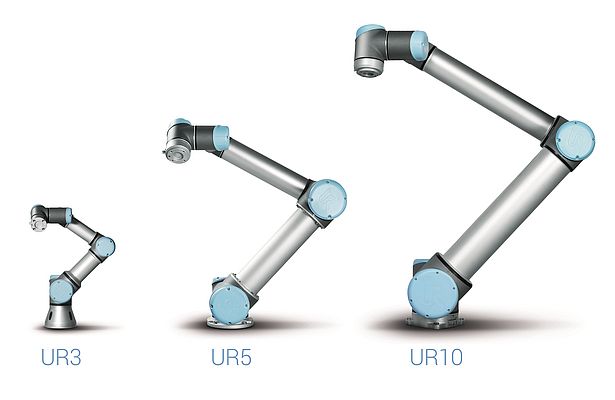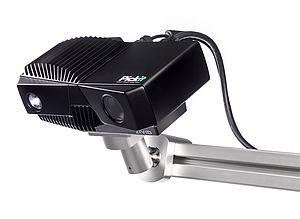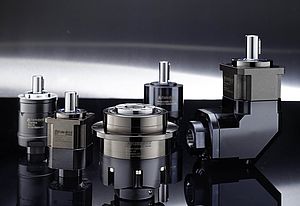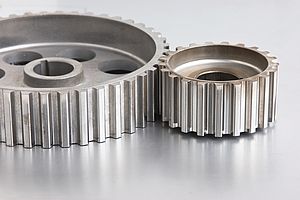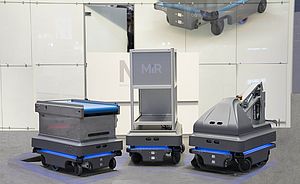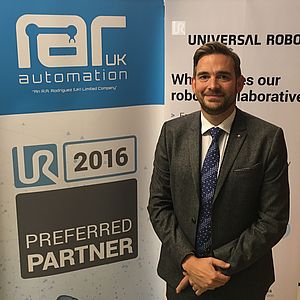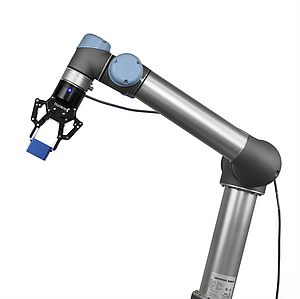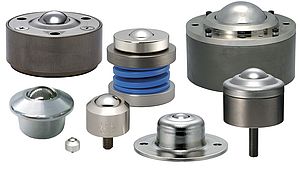Traditional robots can substantially boost productivity but generally they are large devices that are application-specific and complex to programme. They need high production volumes to justify both capital cost and integration time. For a manufacturer new to robotics this can be off-putting and also uneconomical if products and batch sizes are many and various.
The answer for Hertfordshire-based Clamcleats Ltd was a Universal Robot - supplied, and supported by R. A. Rodriguez. This is used to automate the de-gating of injection moulded components for plastics rope cleats. It's a small, light weight industrial robot arm that has six axes of movement and above all is exceptionally quick and easy to install. A specially developed graphical user interface means no expert programming is needed. Within a couple of hours it can be ready to run. It is the ideal entry level automation device that can be set up by anyone.
Optimising production
The problem that drove MD, Julian Emery, to consider automating the de-gating process was initially focussed on the large cleats attached to comparatively thick runners. He explained: "There is an RSI risk with manually clipping these products when cold. To avoid this, our preference was to clip the runners when still warm and therefore relatively soft. But of course that put limitations on when we could run our injection moulding machines. Automation gives us much greater production flexibility."
Whilst a dedicated press was an option, the cost of the tooling involved for each type and size of cleat made it unviable. So Julian Emery went in search of an alternative to do the job. "The Universal Robot stood out for me. As it didn't need to be traditionally guarded we could apply it to a variety of applications. That flexibility made it a safe purchase," he continued. "For example, it could equally be used to load or unload our CNC machines automatically without the need for over-the-top guarding."
Initially however Clamcleats Ltd is focussing its attention on developing fixtures that enable the robot to grip product variations effectively. The company manufactures a wide variety of rope cleats for camping, leisure marine and sports application with 80% of its output produced for export. It also regularly adapts its designs to suit new application.
Light guard integration
As RSI risk was the main reason for the robot's purchase, it is the larger cleats in production runs of around 2,000 that are taking priority. This is the task assigned to Process Engineer, Steve Blease who has worked closely with the robot's supplier R.A. Rodriguez to optimise production. One of their first tasks was to install a light guard, not to protect the workforce from the robot but pneumatic, fixed mounted clippers that automatically close on the gate of the runner to detach the part.
Clamcleats Ltd required any interruption of the safety light curtain to result in an operational pause rather than an emergency stop, requiring re-set. A pause function is a standard option on the Universal Robot but nonetheless R. A. Rodriguez liaised with the curtain's manufacturer, Keyence, to ensure efficient integration.
Currently the uncut parts are manually loaded onto the fixture and located on the sprue. The Universal Robot then transfers the tree-of-parts to the clippers. Having located on the runner, the robot sends a signal to the clippers to make the first cut. In sequence, each part is detached and deposited in to a collection chute and waste material is placed onto a mini conveyor for recycling.


